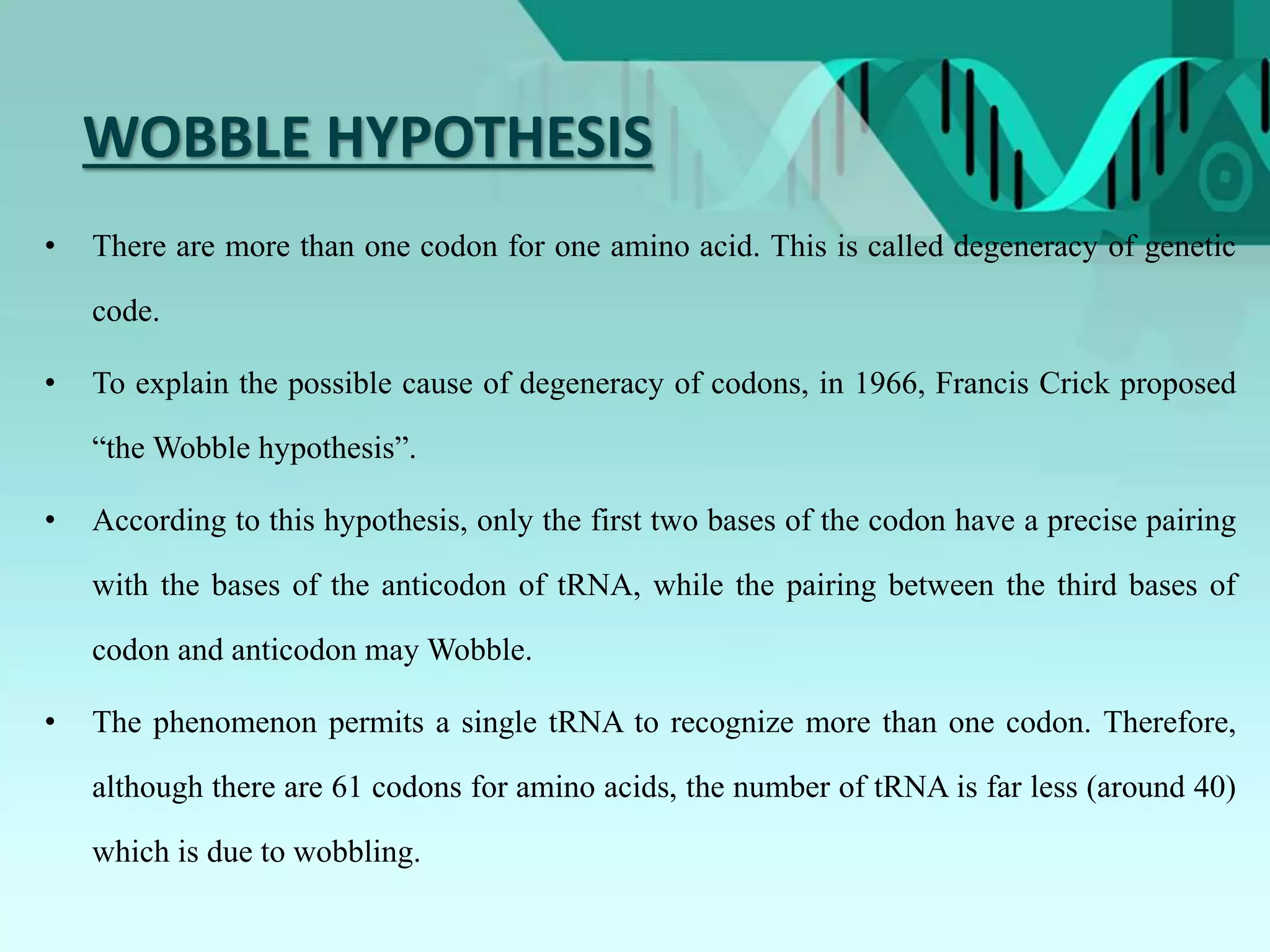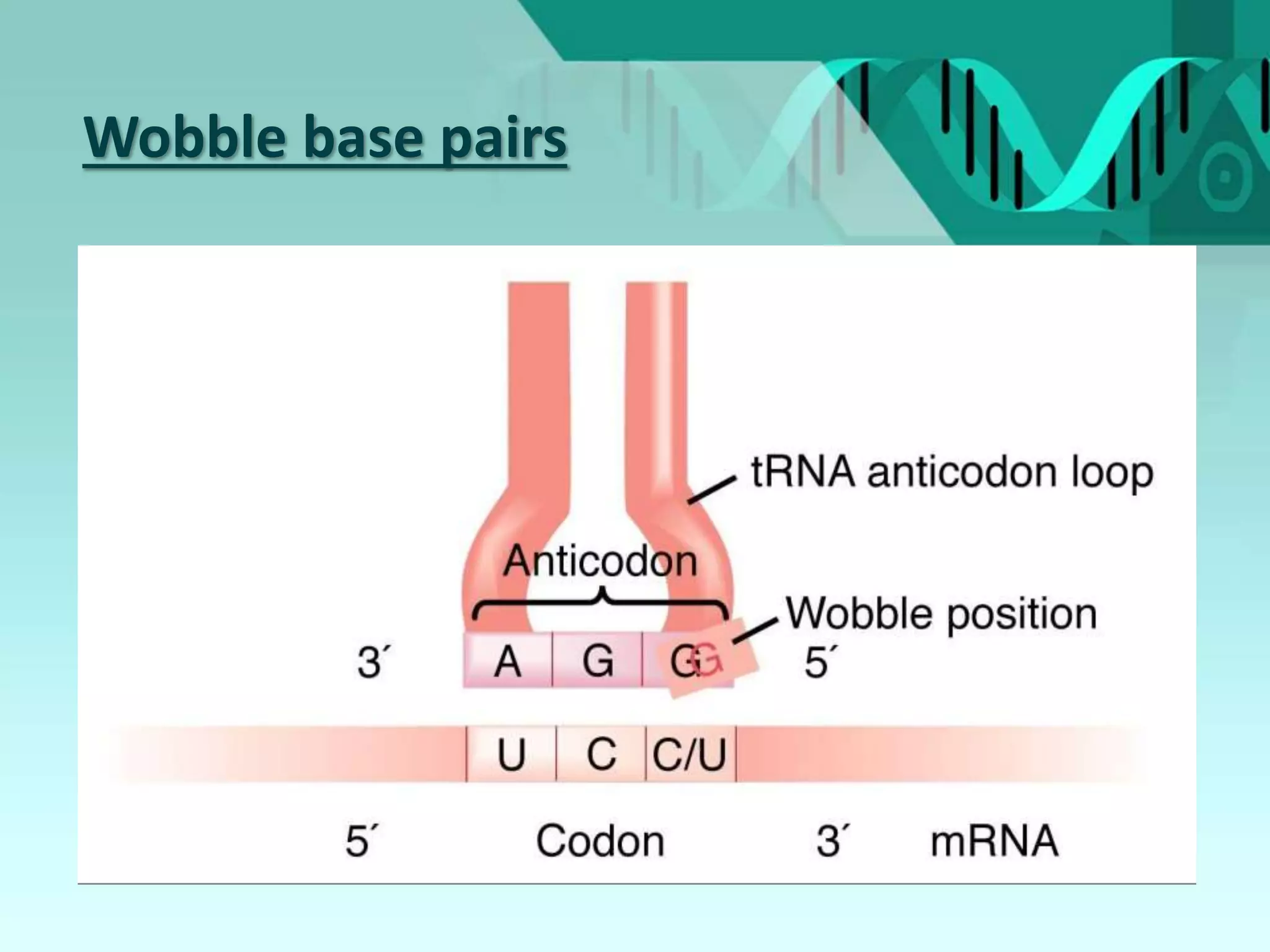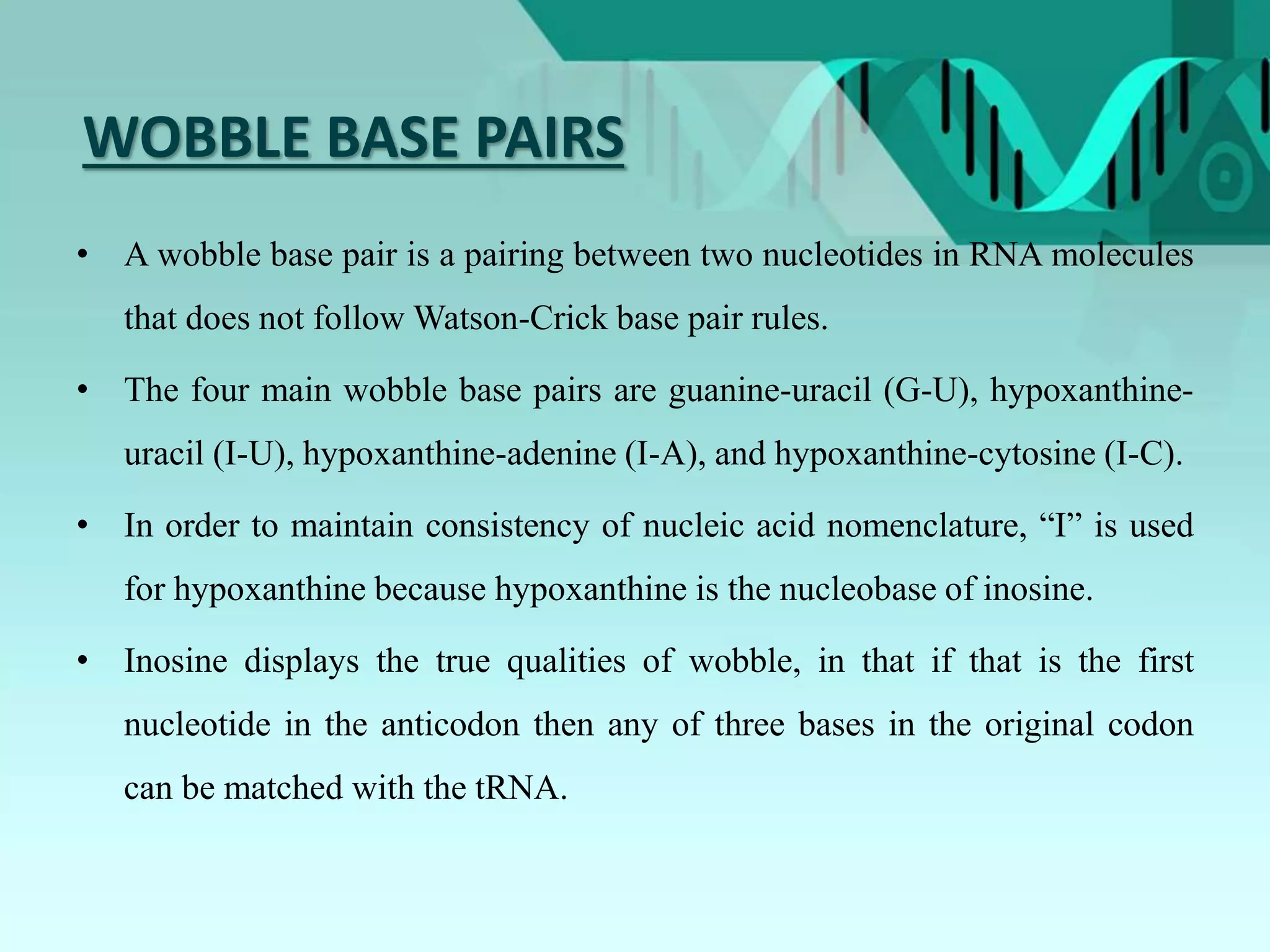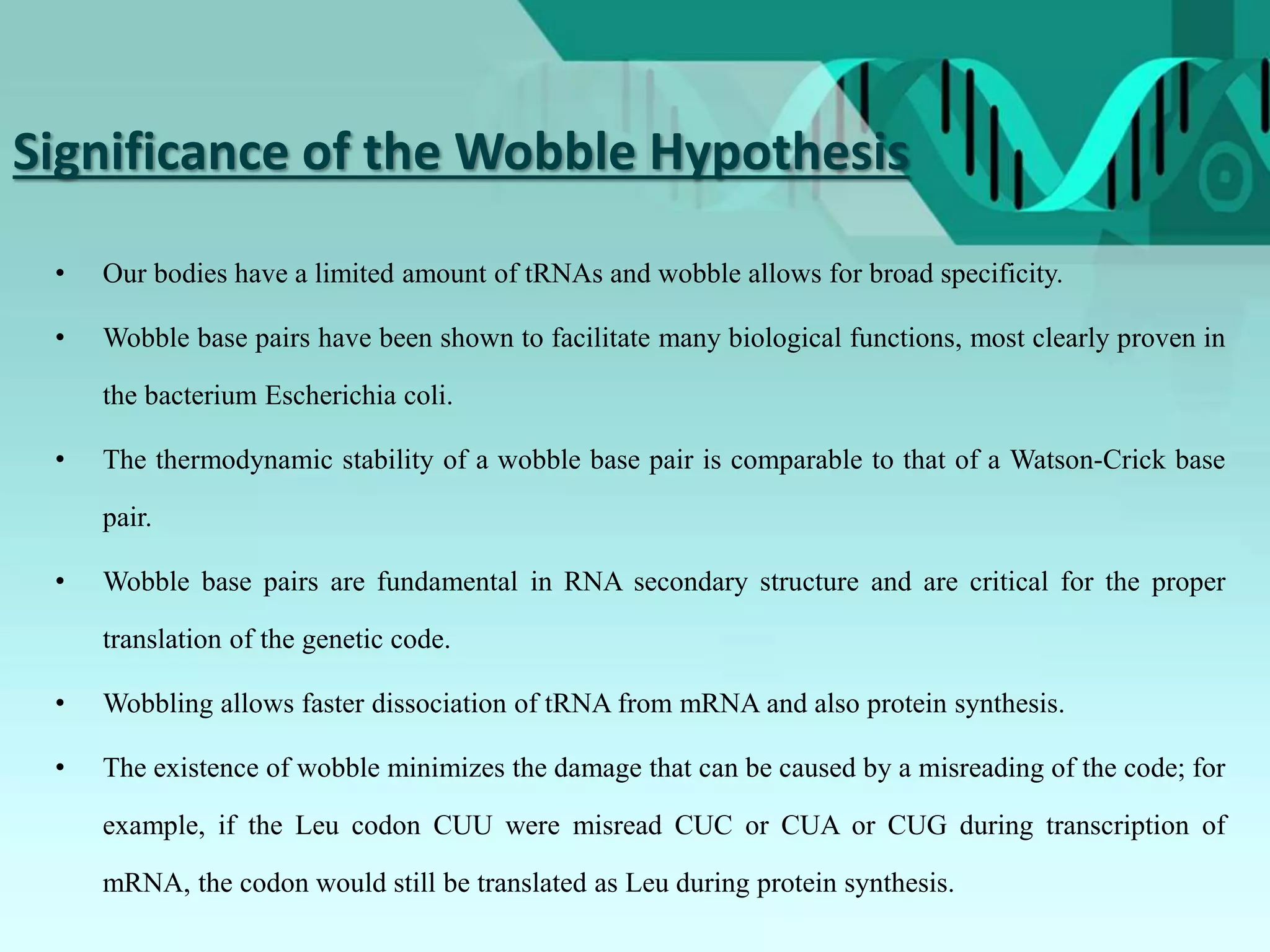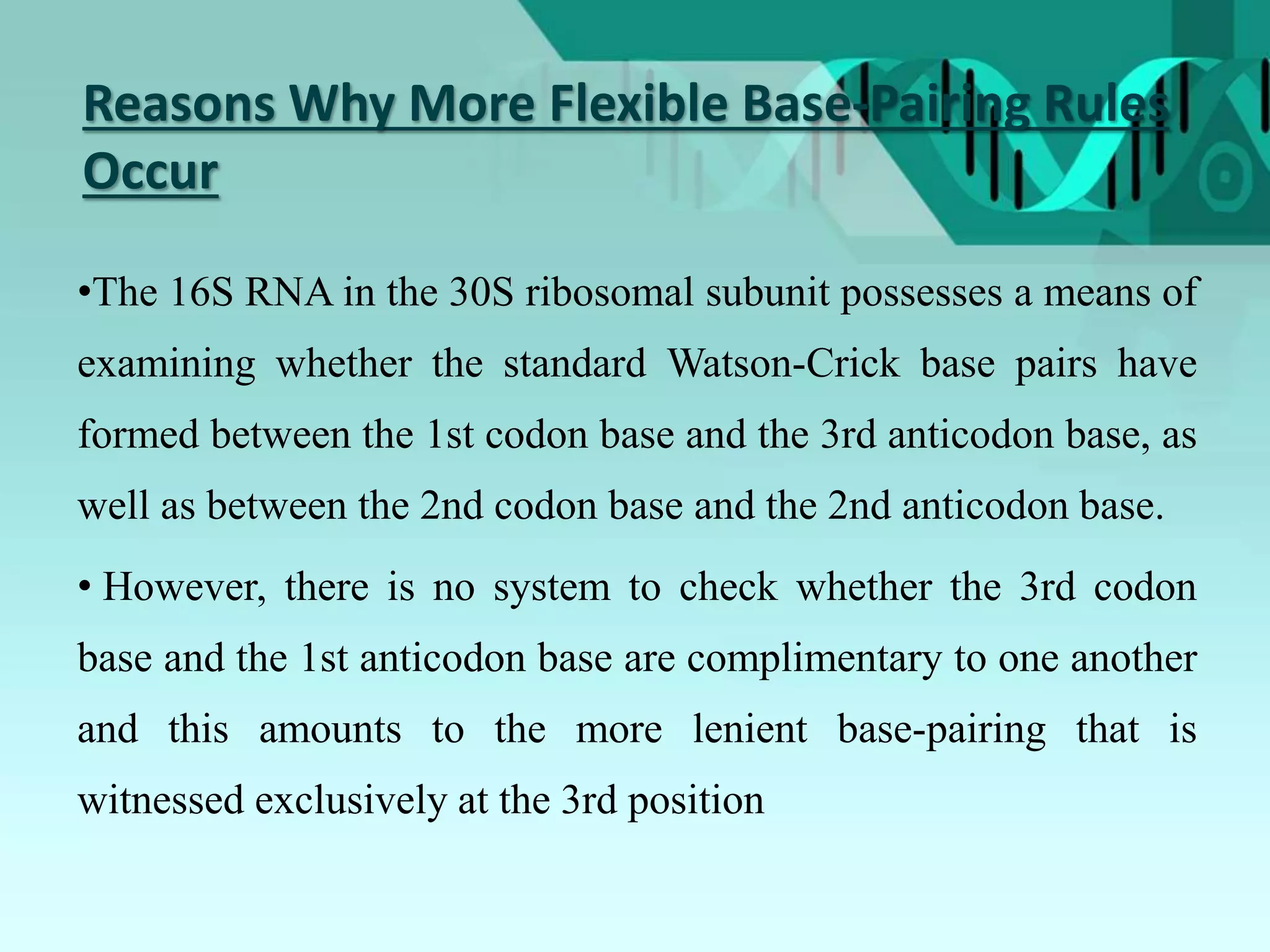The document discusses the wobble hypothesis proposed by Francis Crick in 1966. The hypothesis explains how a single tRNA molecule can recognize multiple codons for an amino acid by allowing non-canonical "wobble" base pairing between the third base of the codon and first base of the tRNA anticodon. This wobble pairing means that more codons exist than the number of tRNA molecules, resolving the degeneracy of the genetic code. The relaxed base pairing rules at the third position of the codon-anticodon duplex are significant as they allow for broader tRNA specificity while maintaining translational accuracy.


